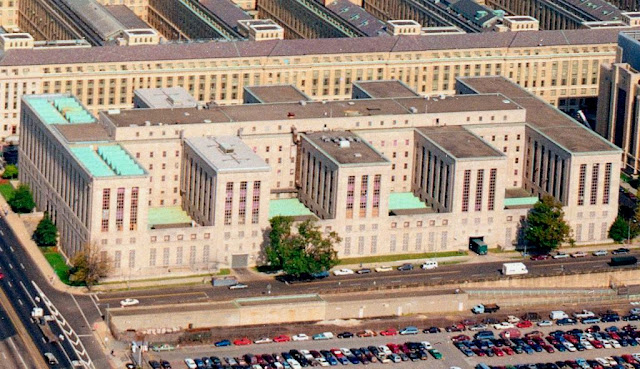Above: "Small Town," a color lithograph by Ann Nooney, created while she was in the WPA's Federal Art Project, ca. 1935-1939. Though several of her works can be found online, there seems to be hardly any information about Nooney's life in newspaper archives or the Internet, and not even her exact dates of birth and death seem to be known (though 1900-1970 is the most frequently offered span). As part of a 2016 art exhibition, a student from Murray State University wrote, "While there is little known about her life, she left behind a legacy of work that continues to provide a visual glimpse of American life during these times" ("Art for the People," February 25, 2016, accessed December 24, 2019). Image courtesy of the Art Institute of Chicago.
Periodic posts about the most interesting time in American history: The New Deal!
Tuesday, December 24, 2019
Friday, December 20, 2019
New Deal Art: "The Steel Age" by Edna Reindel
Above: "The Steel Age," an oil painting by Edna Reindel (1894-1990), created while she was in the New Deal's Public Works of Art Project, 1933-1934. Image courtesy of the General Services Administration and Kristen Fusselle.
Above: The description for this photograph, ca. 1935-1938, reads, "Edna Reindel sits with her cat, Dozy, in front of a mural commissioned for the Fairfield housing project in Stamford, Connecticut by the [New Deal's] Treasury Relief Art Project. Dozy was a model for the mural." Reindel had a prolific and varied art career that included: teaching; book illustrations; a series of paintings published in Life magazine (depicting women in the national defense industries); artwork on the post-war atomic threat; and portraits of movie stars ("Artist's work showed her nuclear fears," Detroit Free Press, April 9, 1990, p. 2B). Photo by Iris Woolcock, provided courtesy of the Smithsonian Archives of American Art.
Sunday, December 15, 2019
The New Deal's Bureau of Engraving and Printing Annex
Above: The U.S. Bureau of Engraving and Printing Annex in southwest Washington, DC, located on 14th Street, between C and D Streets. Photo by Carol Highsmith, taken between 1980 and 2006, and provided courtesy of the Library of Congress.
The U.S. Treasury's 1936 fiscal year report noted: "On August 12, 1935, Congress authorized the construction of a new annex to the Bureau of Engraving and Printing to be located on a site opposite the present building, on the east side of 14th Street, between C and D Streets SW. Plans for this building have been completed by the Procurement Division and a contract for its erection, at a cost of approximately $6,300,000, has been awarded" (p. 131). (The contract was awarded to John McShain, Inc., see, e.g., "Engraving Annex Again Under Way," Evening Star (Washington, DC), September 24, 1936, p. B-15).
The U.S. Treasury's Procurement Division, in charge of the construction, had been created on October 9, 1933, per FDR's "Executive Order No. 6166... and subsequent executive branch actions" ("Public Buildings Branch," Living New Deal, accessed December 15, 2019).
In the Treasury's 1937 fiscal year report, the specific funding sources for the Annex (and other buildings) were described: "The present building program in the District of Columbia is being carried on with funds allotted to the [Procurement] Division by the Federal Emergency Administrator of Public Works [PWA] and from appropriations made direct to the Division" (pp. 183-184).
The Treasury's 1938 report also linked the Annex to the "Public Works Administration [PWA] program" (p. 54).
The Annex was completed in 1938. It provided over 600,000 square feet of additional work space for the Bureau of Engraving and Printing employees. It was described "as the largest reinforced concrete factory type structure in the world" at "523 feet long and 251 feet wide" with two basement levels, "seven stories, attic and penthouse." The building was also fitted with two tunnels, one to a freight station and one to the older, main Bureau of Engraving and Printing building across the street. The latter tunnel used a "pneumatic tube system." ("Engraving Annex Initiates Shift," Evening Star (Washington, DC), June 24, 1938, p. B-1).
Above: In this photo, we see the Annex in the foreground, with the main Bureau of Engraving and Printing building on the left, the Central Heating Plant on the right (the building you see emitting steam or smoke), and the U.S. Department of Agriculture complex behind. Photo by Carol Highsmith, taken between 1980 and 2006, and provided courtesy of the Library of Congress.
Above: The Annex building, 1938. Harris & Ewing photo, courtesy of the Library of Congress.
Above: Henry Morgenthau, FDR's Treasury Secretary, and Alvin Hall, the director of the Bureau of Engraving and Printing, "discuss features of new Bureau of Engraving and Printing annex," 1938. Harris & Ewing photo, courtesy of the Library of Congress.
Above: William H. Abbot was one of several landowners who were very reluctant to leave their homes to make way for the new Annex. After much bickering back and forth, the federal government had to employ its eminent domain powers to take the land, and leave with a court "a sum estimated by the Treasury to be 'full value,' leaving the final determination of the price for further action in condemnation proceedings" ("Property Owners Quitting Site of Engraving Annex," Evening Star (Washington, DC), September 21, 1936, p. B-1). Harris & Ewing photo, courtesy of the Library of Congress.
Subscribe to:
Comments (Atom)







